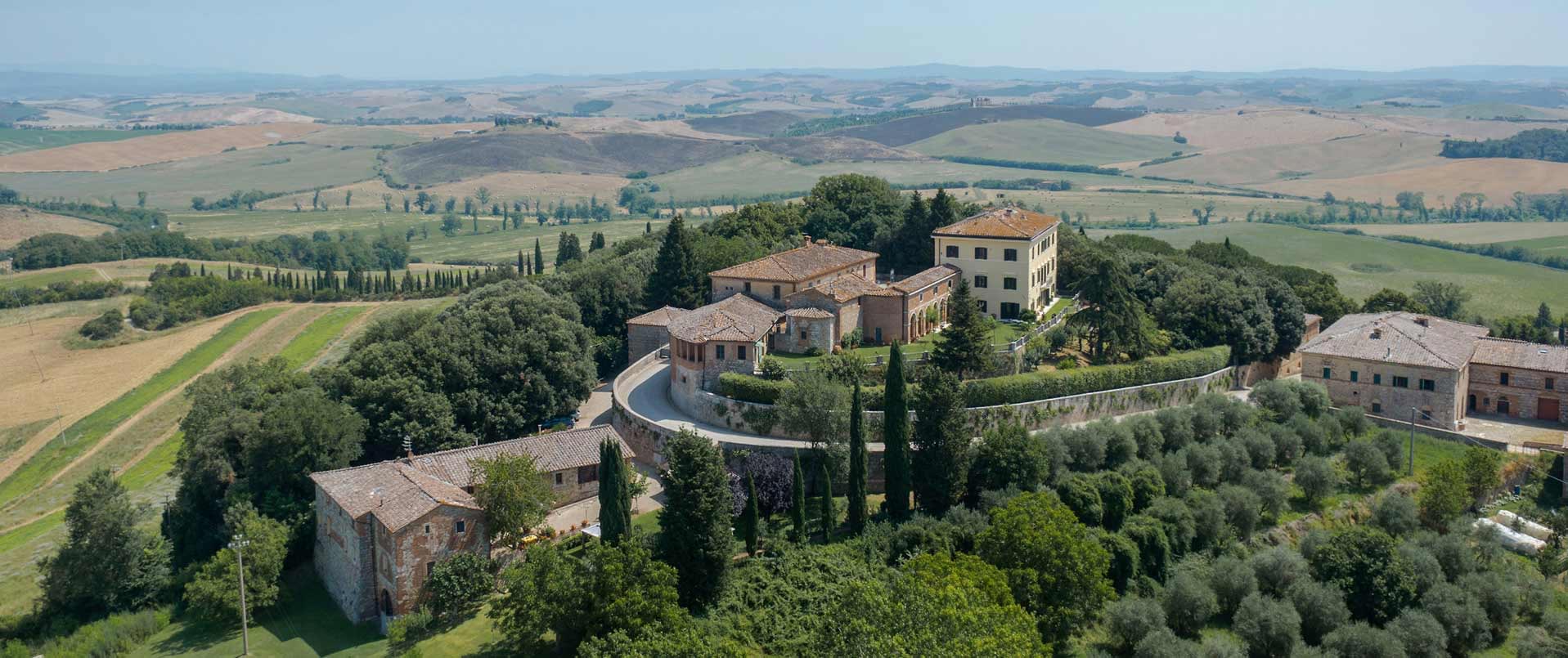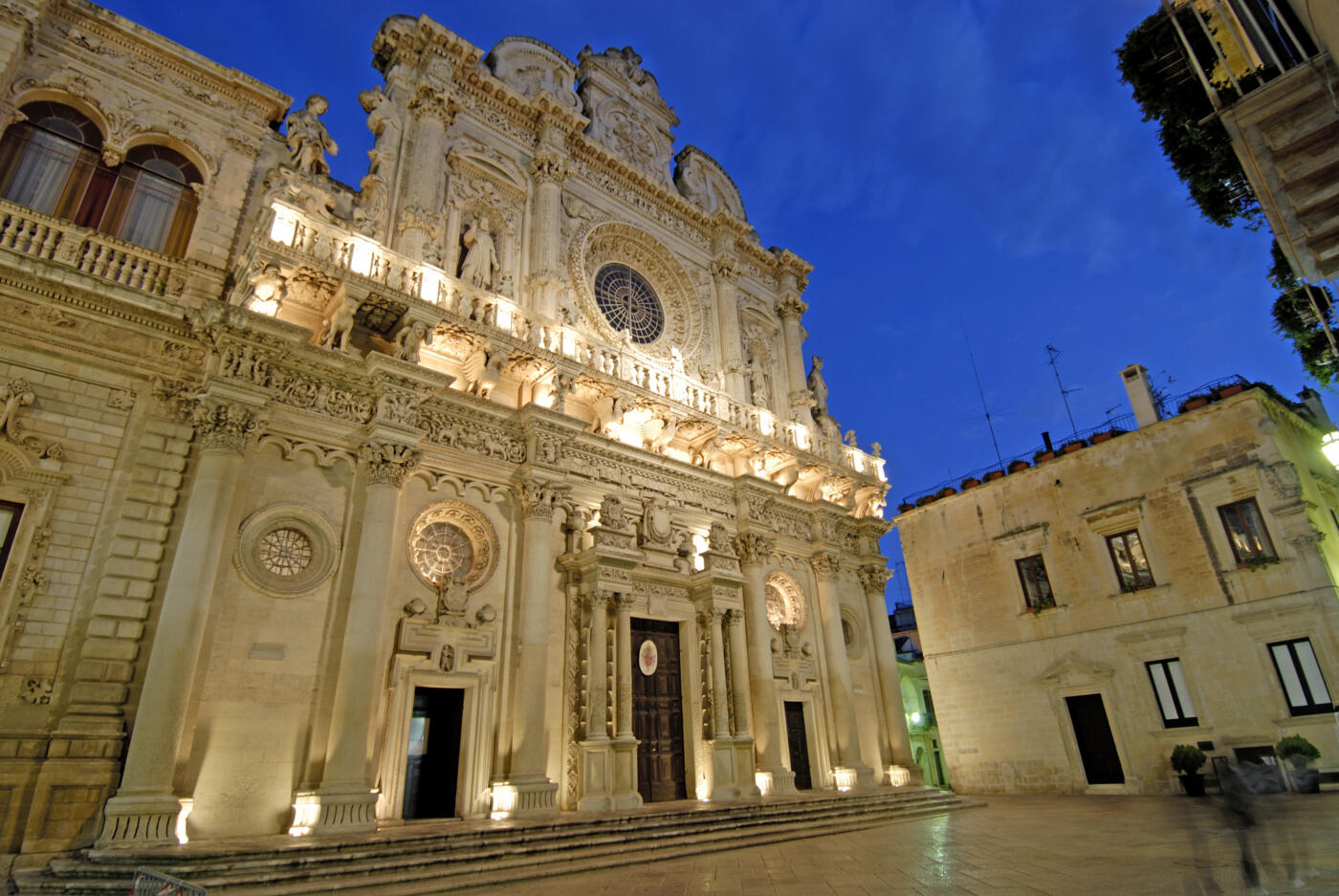
Considering a day trip to Lecce? In our opinion, twenty-four hours is not enough time – add at least one more day, and you will get a better sense of just some of the treasures it has to offer. While it is often called the ‘Florence of the South’, this description does not really capture the true essence of what is nevertheless considered the capital of the Salento region. Lecce has its own distinct flavour and is fundamentally very different from Florence – they are, in reality, two very disparate cities. A powerful depiction of Lecce’s unique charm is to be found in the book Viaggio in Italia (‘Journey to Italy’), in which Guido Piovene, a journalist who also worked for the Corriere della Sera newspaper, wrote:
Lecce retains a noble quality, almost like a distinguished drawing room which is somehow set apart from its surroundings. When you enter the old part of the city, there are numerous baroque churches and palazzos, some of which are facing each other, while others are at an angle, in small squares and streets, arranged with scenic flair to form settings that seem to create a series of miniature theatres. Everything appears carefully arranged, as though created to represent a light-hearted theatre production. A comedy by Goldoni would not feel out of place and would fit right in here. The façades of the churches and palazzos, and the combined effects of the architecture, almost appear temporary, as if they were built to last just one evening, while at the same time they have an eternal feel about them and are a visible manifestation of their own majesty.
Before immersing yourselves in the theatricality of your surroundings, we have a couple of essential tips for visiting this city, whose patron saint is Sant’Oronzo. The first recommendation might seem obvious: if you plan to visit during summer, avoid the hottest hours of the day when the sun’s rays are intense and the wind blowing in from Salento, which is a usually constant companion, may have decided to take an unwelcome break. In reality, the main summer months are not the ideal time to stay in Lecce, when the so-called Tacco or Heel of Italy is inundated with tourists swamping the beaches, a good portion of these crowds heading into the centre in the evenings – which of course makes it even more difficult to reserve restaurant tables and book hotel rooms for the night. Speaking of places where you can fully savour the typical local flavours, we do of course have a list of must-try addresses. If you are looking for fine dining, Bros and Primo would have to be our top choices, and both boast well-deserved Michelin stars. For more traditional restaurants, Trattoria Le Zie has been a veritable institution for over sixty award-winning years and serves classics like sagne (flat, ribbon-like pasta similar to pappardelle or fettuccine), horse meat, seasonal vegetables and sweet desserts. Pastry-making is taken very seriously here, and there is friendly but serious competition concerning who produces the best “pasticciotto”, the most typical local creation, which is made with shortcrust pastry filled with cream. Among the best places to find it are at Natale on Via Trinchese, Chantilly in Piazza Ariosto, Aldemorisco on Via Foscarini and Citiso on Via Oberdan, as well as a branch of the omnipresent Martinucci pastry chain. For regional wines and purchases of the increasingly rare extra virgin olive oil (which has suffered devastation caused by the silent plant killer Xylella, drastically changing the landscape of the Lecce province), we suggest you try Wine&More or Enoteca Merum, which also offer excellent tastings, or Pippi Nocco in the heart of the metropolis. Lecce is famous for its craftsmanship in paper-mâché, and even has a museum dedicated to this art in the Castello Carlo V. Ceramic-making is also celebrated, most notably the pumo, which takes the shape of a bud surrounded by ornamental leaves and was created in honour of the goddess Pomona, protector of all fruits. Keep an eye out for these symbols of good fortune, which can often be seen adorning the balconies and cornices of many homes and buildings. The real symbol of Lecce, however, is its distinctive limestone, suitably named Pietra Leccese, which bestows a unique and unmistakable light over the whole city. Skilled artisans elaborate this stone to this day, creating beautiful pieces that are capable of transforming any kind of interior or external space. When it comes to accommodation, there are a host of charming historic residences to choose from, and we would like to recommend one in particular.

Dimora Muratore offers a truly unique and exclusive experience, in the form of a suite featuring an internal hammam. In addition to this luxurious treat, there are three other elegant and comfortable rooms, characterised by typical vaulted ceilings, on the ground floor of a building which dates back to the late 1800s. Located right in the historic hub, just a few steps from the Duomo and the original 16th-century city walls, Dimora Muratore provides a perfect solution from a logistical standpoint, as well as a great compromise between its central position and its spaciousness, as the residence is surrounded by a roof garden spanning some 1,000 square metres, that stretches across the ancient walls. Those staying here also have access to their own private garden corner with every room. Additionally, upon prior reservation, the residence offers an exclusive home restaurant service, available only to guests.
Starting at the residence, head towards the centre, beginning with the Duomo devoted to Maria Santissima Assunta and its distinctive white pietra leccese stone, which is so characteristic of Baroque architecture.
This building is particularly popular at sunset, offering what is almost certainly one of the most photographed images snapped by those visiting Lecce. This place of worship’s origins date back to 1144, with a reconstruction in 1230 and a third rebuild in 1659, commissioned by Bishop Luigi Pappacoda and designed by architect Giuseppe Zimbalo. Be sure to take in the panoramic view from the top of the bell tower, which is accessible via a convenient lift. Our tour continues with a visit of the Ex Convitto Palmieri, where one of the leading libraries in Puglia is situated. The Biblioteca Bernardini contains 117,000 books, 275 parchments, 486 manuscripts, 31 incunabula (books printed before 1501) and 435 editions published in the 16th century. Proceed on to Piazzetta Carducci, a venue for cultural events such as the annual Artigianato d’Eccellenza exhibition, showcasing high-quality craftsmanship from the region and held in conjunction with the National Day of the ADSI association. The Church of Sant’Irene dei Teatini is an exquisite example of Baroque architecture and is dedicated to the saint who was the patroness of the city until 1656. Also not to be missed are the Basilica of Santa Croce and the ex Convento dei Celestini, formerly a convent and now home to the Prefecture governmental office.
Nestled between the Cathedral and the Convitto Palmieri is the second historic house on our itinerary. Palazzo Bernardini is a noble residence with origins dating back to the Renaissance period which today offers visitors the possibility of staying in comfortable suites and spacious, bright apartments. The palazzo is the result of the merging of three buildings by the Mandoj family in the late 1800s, following the marriage of their only daughter Aurelia to Raffaele Bernardini, the Marquis of Arnesano. The garden is of particular importance, as it contains the oldest Jacaranda tree in the city, along with several other 19th-century plants, citrus trees and ornamental foliage. The palazzo is open to the public during the ‘Cortili Aperti’ Open Courtyards events, which are organised by ADSI in partnership with the Municipality of Lecce. It is also possible to experience a private dinner with a personalised menu in the historic garden.

Keeping the Duomo as your reference point, our discovery of Lecce continues with at the Church of Santa Chiara, another fine example of Baroque architecture. From here, continue on to the large square dedicated to Sant’Oronzo, which houses the remains of the Augustan Roman Amphitheatre and the 29-metre-tall column of Sant’Oronzo. Just a few hundred metres away is another great legacy from Roman times, the Teatro Romano, a theatre that once seated some 5,000 spectators which was discovered by chance in 1929 during construction work that was being carried out in two neighbouring palazzos. The next stop is at the Castello di Carlo V, a 16th-century fortress which now hosts the city’s most important cultural centre. Close to Piazza Sant’Oronzo is the Villa Comunale, formerly known as Villa della Lupa by the locals, due to the presence of a cage where wolves were kept, which is encompassed by the public gardens.
The only thing missing to complete your Apulian experience is a visit to a typical local masseria, a traditional rural estate or farmhouse to be found in the southern regions of Italy. There is a perfect example just 5 km outside Lecce. Masseria Lilei is one of the most significant representations of rural construction in the Lizzanello area. Built at the end of the 15th century, this fortified farmhouse, with its stone vaulted ceilings, sits within a 90-hectare agricultural estate producing wine and olive oil. The masseria features a saltwater pool with a jacuzzi and offers luxurious hotel accommodation with various options, including a Master Suite of circa 120 square metres and a suite located in the oldest part of the building, at the base of what used to be the defence tower. Guests can participate in cooking classes and wine tours around the estate or in one of the best wineries in Salento. Guided tours can be organised, while civil weddings and unions can also be celebrated here. The farmhouse grows organic products, including wine, olive oil, fruit and medicinal plants. The seaside – or should that be in the plural, given that there is water on both sides of the Heel of Italy – is within very easy reach. Depending on which way the wind is blowing, head to whichever is calmer! If the weather forecast predicts a blast of the maestrale, choose the Adriatic coastline, while if you hear talk of the bora, the Ionian sea is by far the better bet.